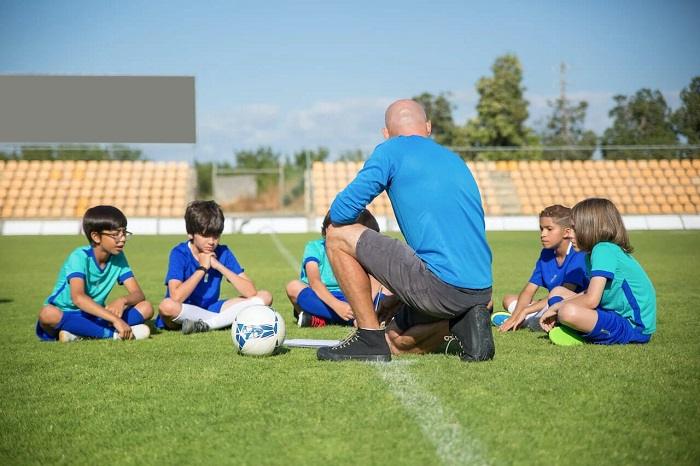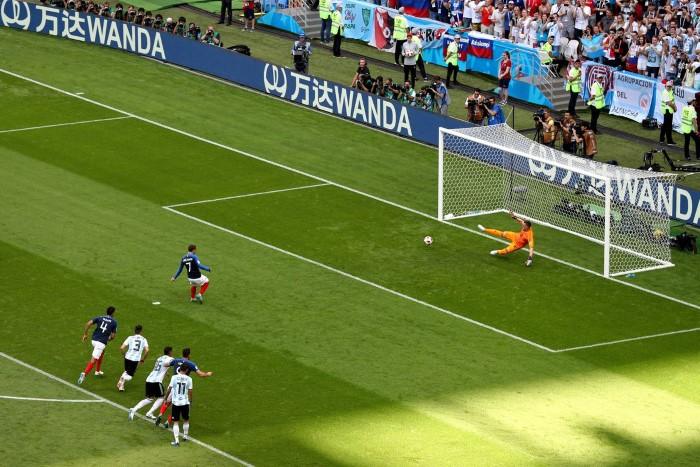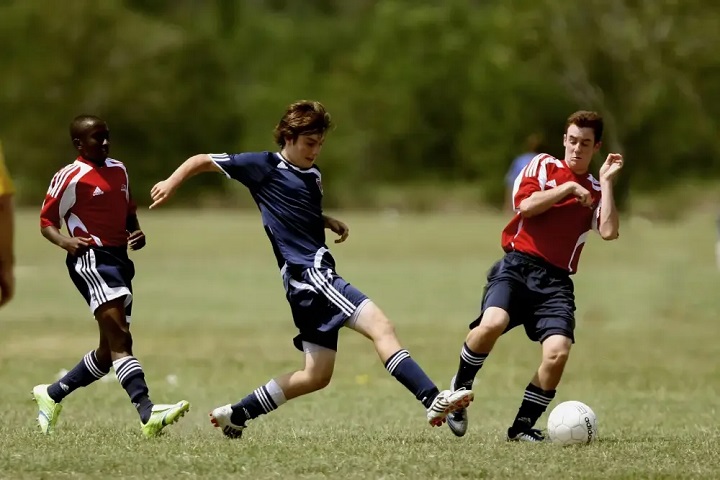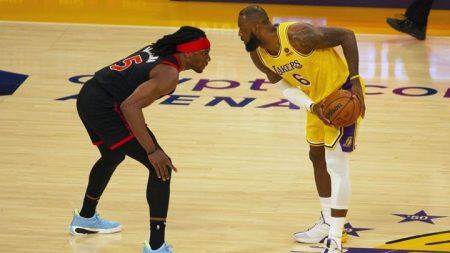This guide will cover the length of a standard soccer game, variations in time based on leagues, extra time scenarios, and more. By the end of this article, you will have a comprehensive understanding of soccer’s match duration and the nuances that come with it.
Standard Length of a Soccer Game

A standard soccer game lasts 90 minutes, divided into two halves of 45 minutes each. This format is followed by most professional leagues worldwide, including the prestigious leagues such as the English Premier League, La Liga, and FIFA World Cup matches.
Each half begins with a kickoff, and teams switch sides after the first half. There’s a 15-minute halftime break to allow players to rest, strategize, and recover before returning to the pitch for the second half.
What Happens During Halftime?
Halftime isn’t just a break for the players but also a crucial part of the match where coaches can make tactical changes. For fans, it’s an opportunity to analyze the game, grab a snack, or refresh before the intensity of the second half begins. Halftime generally lasts 15 minutes, but this can vary slightly depending on the competition.
Why Is the Match Time 90 Minutes?
The 90-minute standard was first introduced in the late 19th century, particularly in England, where football’s modern rules were developed. Research at the time indicated that 90 minutes was an ideal balance—long enough for both teams to establish a clear winner without exhausting players beyond safe limits.
Additional Time and Stoppage Time
Although a soccer game is officially 90 minutes long, you may notice that the clock often goes past the 90-minute mark. This is because of stoppage time, also known as injury time.
What Is Stoppage Time?
Stoppage time is additional time added by the referee at the end of each half to compensate for any time lost during the match due to injuries, substitutions, goal celebrations, or other interruptions.
- First Half: After the first 45 minutes, stoppage time is added to make up for delays in that half.
- Second Half: After the second half, stoppage time compensates for interruptions in that period.
The amount of stoppage time is usually displayed by the fourth official on the sidelines, holding up an electronic board showing how many minutes will be added. Stoppage time typically lasts 1 to 5 minutes, but it can be longer in cases where there have been significant delays.
How Is Stoppage Time Calculated?
Referees use their discretion when determining stoppage time, considering the length of delays for injuries, substitutions (usually about 30 seconds per substitution), and other time-wasting tactics. While stoppage time aims to ensure fairness, it often leads to dramatic and thrilling endings, especially when a team is desperately trying to score a last-minute goal.
Extra Time: When a Match Needs More Than 90 Minutes
In knockout tournaments, such as the FIFA World Cup or Champions League, matches can’t end in a draw if a winner is required to advance to the next round. When teams are tied at the end of 90 minutes, the game goes into extra time.
How Long Is Extra Time?
Extra time consists of two 15-minute halves, making it an additional 30 minutes in total. There’s usually a brief break between the two halves, but no halftime like in the regular match.
- First 15-Minute Half: Both teams switch sides and play for an additional 15 minutes.
- Second 15-Minute Half: After a short break, the teams switch sides again and play the remaining 15 minutes.
Is There a Golden Goal Rule?
The golden goal rule, which meant that the first team to score in extra time would immediately win, was once used in soccer tournaments. However, it has been phased out of major competitions since the early 2000s. Nowadays, the teams play the full 30 minutes of extra time, regardless of whether a goal is scored early on.
What Happens If Extra Time Ends in a Draw?
If both teams are still tied after the 30 minutes of extra time, the match proceeds to a penalty shootout. Penalty shootouts are the ultimate decider when all other forms of play have failed to break the tie. This is an incredibly tense part of the game where teams take turns shooting from the penalty spot, and the goalkeeper tries to save the shots.
Penalty Shootouts: The Final Decider

If a winner has not been decided by the end of extra time, the match goes to a penalty shootout. Each team selects five players to take a shot from the penalty spot, and the team that scores the most goals out of those five wins the match.
If the teams are tied after the first five shots, the shootout continues into sudden death rounds, where the first team to miss a shot while the other scores loses the game.
Penalty shootouts are rare but often produce some of the most dramatic moments in soccer history. They are high-pressure situations that test both the skill and mental toughness of players.
Youth and Amateur Soccer Match Durations
While professional soccer games last 90 minutes, the duration of matches at youth and amateur levels varies depending on the age group.
Youth Soccer Match Durations
- Under 6 to Under 8: Games are typically shorter, often lasting 20 minutes per half (40 minutes total).
- Under 10 to Under 12: These games usually have halves of 25 to 30 minutes.
- Under 14 to Under 16: Soccer matches last 35 minutes per half, making the total game time 70 minutes.
- Under 17 and Above: These age groups usually play full-length matches, with 45 minutes per half.
Amateur Soccer and Friendly Matches
Amateur soccer matches can vary in length based on local rules or the competitiveness of the league. In informal or friendly matches, game times may be adjusted to fit the schedule or stamina of the players, sometimes lasting 60 to 80 minutes.
Factors That May Affect Soccer Match Duration
While the standard match length is 90 minutes, several factors can extend the duration of a soccer game.
Injuries
Serious injuries can lead to long stoppages, sometimes lasting up to several minutes. If a player requires on-field treatment or needs to be stretchered off, the referee will add that time back during stoppage time.
Substitutions
Each team is allowed to make a certain number of substitutions during a match (usually three, but some tournaments allow five). The referee may add a few seconds to stoppage time for each substitution, especially if a team is deliberately slow in making the change to waste time.
VAR (Video Assistant Referee)
With the introduction of VAR, some match stoppages now last longer than they once did. Referees may consult the pitchside monitor to review key decisions like goals, penalties, or red cards. This can add anywhere from 30 seconds to several minutes to the total match time.
Time-Wasting Tactics
Teams that are winning often use tactics to run down the clock, such as taking their time to make substitutions, slow goal kicks, or throw-ins. Referees keep track of this time and add it back at the end of each half.
How Does Soccer Game Time Compare to Other Sports?
To better understand the length of soccer games, let’s compare them to other popular sports:
- American Football: A typical game lasts about 3 hours, with four 15-minute quarters, but the actual playing time is much shorter due to frequent stoppages.
- Basketball: NBA games last about 2 to 2.5 hours, with four 12-minute quarters.
- Baseball: A baseball game has no fixed time limit, but most games last around 3 hours, with nine innings played.
Compared to these sports, soccer is more continuous, with fewer breaks in play, and the entire match, including stoppage time, typically lasts about 105 to 120 minutes.
The duration of a soccer game can vary depending on the level of play, match rules, and unforeseen events. In professional soccer, matches last 90 minutes, with the possibility of extra time and penalty shootouts in knockout formats. Stoppage time adds an unpredictable element, often making the final moments of a game the most exciting.
Whether you’re a new fan or a seasoned enthusiast, understanding the timing of a soccer match is essential for enjoying the sport to its fullest. So next time you’re watching a game, you’ll know exactly how long the action will last—and when those tense, extra moments might begin.







